Treatment of thyroid disorders with BICOM therapy
Dr. med. Jürgen Hennecke, Aachen
INTRODUCTION
Around 15 % of the German population suffer from enlargement of the thyroid (goitre), around 2 % from hyperthyroidism and around 1 % from hypothyroidism. As a result, thyroid disorders are amongst the most common metabolic disorders.
BICOM therapy can often have a beneficial effect on the course of the disease and relieve the symptoms.
PHYSIOLOGY OF THE THYROID
The thyroid produces two hormones triiodothyronine (T3) and thyroxine (T4) which stimulate the metabolism of virtually all the body’s cells and also affect most other endocrine glands. The pituitary gland regulates production of these hormones through a feedback system. The pituitary is, in turn, influenced by the hypothalamus and thus the individual’s psychological state (emotions). Hormones from other endocrine glands and medication can also provoke changes in this control circuit. In terms of energy, various pathological influences (radiation, interference fields, scars, allergies, heavy metals, environmental toxins, pathogens) may upset this delicate balance (Fig. 1).
Enlargement of the thyroid or goitre (diffuse or nodular) is generally caused by iodine deficiency. The metabolic condition is generally euthyroid. Alongside hormone replacement therapy, bioresonance therapy (BRT) can improve iodine assimilation and metabolisation.
Progr. 311
Input: iodine point, upper edge sternum Output: modulation mat on the back
Progr. 549
also retards the growth of goitre
Hyperthyroidism (thyroid overactivity) is accompanied by symptoms of increased metabolism (Tab. 1)
The most frequent causes are toxic thyroid adenoma and Graves’ disease.
Toxic thyroid adenoma is a benign nodule which produces thyroid hormones independently and consequently unregulated by the pituitary. In orthodox medicine surgical removal is generally recommended, alternatively thyroid depressants or radio iodine therapy.
Graves’ disease is an autoimmune disorder. Hormone production by the thyroid cells is stimulated by thyrotropic antibodies, likewise independent of the control of the pituitary (Fig. 2).
As the disease generally progresses intermittently, thyroid depressants are usually administered until the next remission. If the disease is more protracted, the tissue is reduced with radio iodine therapy.
Hypothyroidism (thyroid underactivity) exhibits symptoms of a slowed down metabolism (Tab. 1). The most common cause of the acquired form is the destruction of thyroid cells by auto antibodies as in Hashimoto’s thyroiditis. This is also an autoimmune disease (Fig. 2).
Orthodox therapy consists of replacing thyroid hormones.
“ENERGETIC THYROID DISORDERS”
The injection of a local anaesthetic (e. g. procaine) in the thyroid lobe has long been practiced in neural therapy.
This provides a therapeutic impulse to regulate the energetic endocrine imbalance. This technique has not only been shown to support active thyroid disorders but also to relieve “thyroid like symptoms”, where there is no evidence of structural changes and laboratory tests are normal (globus sensation, anxiety, nervousness, palpitations and other vegetative symptoms). Similar results can be obtained with BRT without the need for injections (which can be unpleasant for some patients).
ENERGETIC DIAGNOSIS
As with all chronic diseases, the holistic therapist searches for the “hidden causes” of thyroid diseases.
The “pituitary – thyroid” system is highly sensitive to electromagnetic radiation (geopathy, electrical smog) and to radioactivity. Consequently careful testing and clean up is necessary with all thyroid disorders.
Scar interference fields in the throat and head area, including the teeth and tonsils, constitute therapy blocks just as frequently as “remote foci” in the true pelvis
Heavy metal deposits (e. g. mercury) in the glandular tissue or evidence of information from environmental toxins (formaldehyde, wood preservatives) are not uncommon. Metabolic toxins from viruses, bacteria, fungi and parasites can also harm the glandular tissue directly or trigger auto immune processes.
Auto immune disorders are frequently accompanied by chronic allergies (often cow’s milk) (Tab. 2).
BIORESONANCE THERAPY
The treatment plan consists firstly of treating the stress factors found and secondly of applying tried and tested stabilising therapeutic programs. We have also had positive results through starting with Sissi Karz’s therapy system (basic therapy searching for the frequency of the primary focus, treatment of the mandibular joint, nutrient points) and then eliminating the remaining stress factors.
The position of the input and output applicators should be tested out individually for the therapy programs. The thyroid often has to go in the input (as well). Always use endogenous humours (blood, saliva, etc.) as well!
In addition to therapy programs specific to the thyroid (934, 548, 549), programs for hormonal regulation (980, 981, 934) and pituitary regulation (916) are also used. Owing to the energy and hormonal relationship with the suprarenal glands and gonads, support is also frequently needed here (480, 481, 482).
Chakra therapy using information from colours and precious stones stabilises the whole energy and hormonal system and smoothes the way for further specific therapies.
As with all auto immune disorders, immune stimulating programs should be avoided and toxins should only be eliminated slowly and gradually, carefully testing and observing the patient’s reactions.
Orthodox treatment is often unavoidable with active hypo or hyperthyroidism.
However, there are numerous latent, subclinical forms with laboratory test results around the threshold level or up only slightly
Aims of bioresonance therapy
retardation or regression of goitre on low doses of medication
stimulation of remaining intact thyroid tissue with hypothyroidism
slowing down the auto immune processes
prevention of hyperthyroidism advancing or acceleration of remission
relieving the patient’s subjective symptoms, including where the autonomic nervous system is disturbed
as the disease is generally chronic, the patient often needs long term therapy. Following initial intensive (generally weekly) treatment for therapy blocks and chronic stresses, “refresher treatment sessions” at less frequent intervals are beneficial later.
BICOM programs
Test input and output applicators as far as possible! Usually “thyroid” in input as well.
PSYCHOSOMATIC ASPECTS
The thyroid has energy links to the throat Chakra (4). Amongst other things it controls the transition from the (physical) internal to the external world. Blocks make it harder to process impressions and impede expressiveness (speech, self assurance, personal freedom). Feelings of guilt which have not been dealt with “constrict the throat” and “take the breath away” (thyroid = “guilt gland”?* ).
CASE STUDIES
Patient H.D., female, aged 56
Diagnosis
Hyperthyroid Graves’ disease with goitre, chronic sinusitis. Feeling of pressure on throat, subjective feeling of unrest. Neo Thyreostat discontinued as not tolerated
Test
Geopathy, hormone imbalance Allergy: cow’s milk, house dust, mould
Occasional slight feeling of pressure in throat, otherwise subjectively virtually symptom free! T3, T4 normal, TSH up to threshold level.
Currently “stabilising therapy” every 6 months!
Patient M.E., female, aged 47
Diagnosis
Euthyroid Hashimoto’s thyroiditis, recurrent arthritis, chronic sinusitis, migraine like headaches, menopausal symptoms, functional dyspepsia, “feels weary and ill”.
Test (11.12.00)
Geopathy, hormonal imbalance, interference from tonsillectomy scar on both sides, intestinal mycosis, house dust allergy.
Therapy
Changed sleeping area, natural intestinal flora restored.
Patient G.E., female, aged 57
Diagnosis
Immune thyroiditis, latent hypothyroidism, chronic cervical syndrome, previous amalgam clean up.
Test (11.06.01)
Geopathy, cow’s milk allergy, mercury contamination, hormonal imbalance.
Interference fields: cervical spine, sacrum, stomach, uterus
Therapy
Sleeping area changed!
